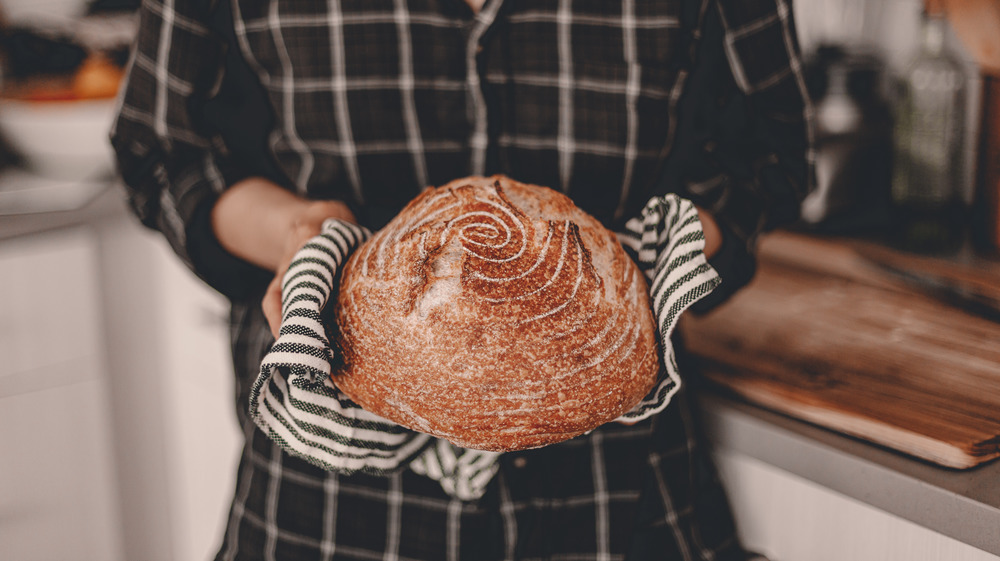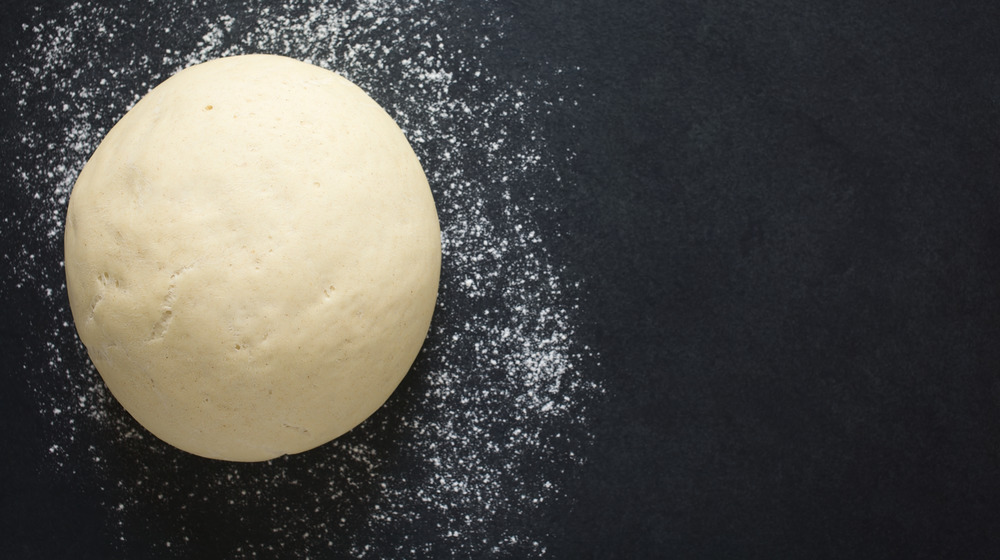This Oven Hack Makes Proofing Bread Dough Easy
We may receive a commission on purchases made from links.
There's nothing quite like the aroma of freshly baked bread wafting through your space, but many home cooks can be intimidated by the process of crafting a loaf, as there are many things along the way that can go wrong (via Serious Eats). However, there's one tip you need to know that will make the proofing process a whole lot easier, and all you need is your oven, a baking dish, and a bit of water.
Simply fill a glass baking dish with some boiling hot water and place it on the bottom rack of your oven. Then, Taste of Home says to place your dough on a higher rack, and shut the oven door. Seriously, that's it! The dough will then be enclosed in the type of environment that's absolutely perfect for proofing. The boiling water trick works so well because the ideal temperature for proofing your bread is about 75 to 78 degrees Fahrenheit, according to Food Network.
There are other ways to proof bread dough, including the traditional way of proofing it in a bowl at room temperature. However, that method works best in warm spaces, and the process can be compromised if it's a bit chilly in your kitchen (via Taste of Home). You can also pull out a slow cooker to do a similar hack as the oven trick, placing a bowl of dough above some simmering water, or even invest in a proofing box (via Taste of Home).
How do you know when it's properly proofed?
There are a few tell-tale signs that can help indicate when it's time to get your loaf baking. First of all, when you peek through the window in your oven to check the progress, you should notice that the dough is about double the size of when you placed it in the oven to proof (via Food Network).
Since it may be tough to determine exactly when the dough has doubled in volume, you can also test it with a simple poke. As Bon Appétit advises, give a hardy poke to your loaf with your floured or oiled finger or knuckle, and then watch. If it immediately springs back, it needs a bit more proofing time, but if it's a bit slower to recover, you can get that loaf baking ASAP (via Bon Appétit). If the indentation stays and the dough doesn't bounce back at all, you've likely over-proofed your loaf (via Modernist Cuisine).
All hope isn't lost if you've let your carefully kneaded loaf hang out a bit too long in your steamy oven, though. During the proofing process, the reason you see that rise in your dough is that the yeast cells within it release carbon dioxide gas (via MasterClass). According to Modernist Cuisine, on most loaves of bread (sourdough is a bit trickier) you can reverse the proofing a bit by pressing firmly to release the gas and then reshaping the loaf to try again.

